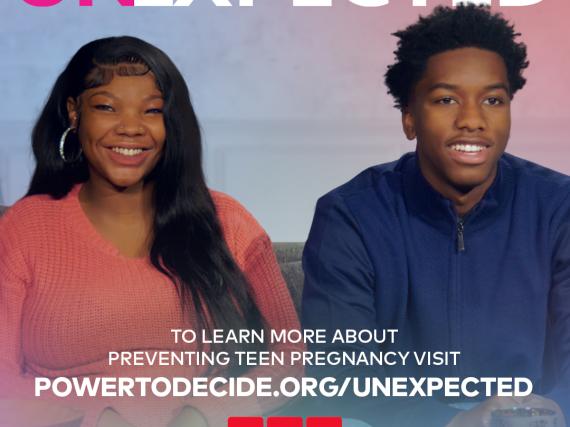June 2022: Power Updates Edition
There are plenty of articles, publications, and stories published every month. To help you distinguish fact from fiction, save time in your already busy day, and share news you may not have otherwise seen, here are nine stories from the last month we thought you might find interesting:
Birth Control
Virtual Intrauterine Device Placement Training Improves Clinician Comfort
This study evaluated a virtual, hands-on IUD training for primary care clinicians. Participants included nurse practitioners and midwives, physician assistants, physicians, and clinicians in training; about 37% had previous experience placing IUDs. Training sessions conducted via video conferencing included: didactic instruction on IUD eligibility, counseling, placement, and removal; demonstrations of procedures for all FDA-approved IUDs using pelvic models; and guided hands-on practice with IUDs. Providers rated each training element highly and pre- and post-test surveys showed a significant increase in comfort with both placing and removing IUDs.
Effectiveness and Harms of Contraceptive Counseling and Provision Interventions for Women
This literature review synthesized existing research regarding the effectiveness of contraceptive counseling and provision interventions aimed at increasing control use and decreasing unintended pregnancy. Thirty-eight randomized controlled trials were included in the study. Findings suggest that contraceptive counseling and interventions that provide services beyond routine care (e.g., emergency contraceptives in advance of patients need or contraceptives immediately postpartum or at time of abortion) increase contraceptive use without increasing sexually transmitted infections or reducing condom use.
Abortion
When abortion access is limited, it is common for people seeking an abortion to have to travel to find care. This study used 2017 data from CDC, the Guttmacher Institute, and the US Census to calculate state-specific abortion rates and the percentage of abortion patients who left their state of residence for abortion care. Overall, an average of 8% of patients had to leave the state where they lived to obtain an abortion, but percentages varied widely by state. For example, 74% left Wyoming, 57% left South Carolina, and 56% left Missouri whereas 13 states had fewer than 4% of patients leaving for abortion care. On average, in states with more restrictions on abortion access 12% of patients left the state for abortion care while in states supporting access only 3% left.
Confidential and Legal Access to Abortion and Contraception in the USA, 1960–2020
This review article summarizes the history of policy changes affecting birth control and abortion access over the last 60 years. In addition to providing historical context to the changes discussed, a state-by-state policy dataset is provided to support accurate policy coding in future research. Based on the review, the following recommendations are made for future studies examining the effect of policies on access to birth control and abortion: distinguish between the pre-1976 and post-1980 periods; avoid the 1977–1979 period all together since legal rights of minors in relation to these services were unclear; and for research on 1980-2020, consider whether parental involvement laws limiting confidential access to abortion for minors are enforced.
This report presents the latest data from the Abortion Provider Census administered by the Guttmacher Institute. In 2020, a total of 930,160 abortions occurred in the United States, which represents an 8% increase since 2017 and a change from the 30-year decline in the US abortion rate. From 2017 to 2020, the US saw a 6% decline in births. Taken together, these patterns suggest that in 2020, fewer people were getting pregnant, and of those who did, a larger proportion had an abortion. Though Guttmacher notes a number of state-specific changes, they found no pattern to explain the increases or decreases in abortion rates by state.
Sexual and Reproductive Health
A Latent Class Analysis: Identifying Pregnancy Intention Classes Among U.S. Adolescents
This study used 2015-2019 data from the National Survey of Family Growth to better understand pregnancy desire, feeling, timing, and social acceptability among young people aged 15-19 years, including adolescent males. While most adolescents (53% of females and 82% of males) intended to have children but favored delaying pregnancy for at least five years, 28% of females and 8% of males wanted a pregnancy in the nearer future. Female adolescents with a history of pregnancy were more likely to report ambivalence around pregnancy intention than any other group.
This study presents findings from 22 key informant interviews with primary care and OB/GYN physicians, health educators/promoters, advocates, and public health/health care professionals to better understand views on providing reproductive health services, including pregnancy intention screening and LARC methods, in primary care settings. Overall, interviewees indicated support for integrating reproductive health care services into primary care. All stakeholder groups agreed that pregnancy intention screening benefited patients by facilitating counseling for contraception/preconception health but requires attention to patient and health system factors. Regarding LARC methods, providers emphasized concerns about training, bias, and logistical issues whereas health educators focused on about patient education and autonomous decision-making. Awareness of reproductive justice principles also varied by stakeholder group.
This study considered how young people’s views on sex, birth control use, and pregnancy in adolescence influenced contraceptive non-use and unintended pregnancy outcomes among peers during early adulthood. Using data from the National Longitudinal Study of Adolescent to Adult Health, researchers found that 12% of young people reported not using birth control and one-third reported at least one unintended pregnancy. Young women with friends who did not accept teenage pregnancy had a reduced likelihood of becoming pregnant. Those with friends who had a positive outlook on sex as teens had increased odds of using birth control later in life while the opposite was true of those with friends who viewed contraceptive use negatively. Findings suggests that an adolescent’s social network plays an important role in their later reproductive well-being.
Pregnancy Intention Screening in Patients with Systemic Rheumatic Diseases
Co-authored by Bill Albert, Power to Decide’s Senior Director, Content, this study evaluated the feasibility and impact of using One Key Question® (OKQ), a pregnancy intention screening tool, among patients with rheumatic conditions. Over the course of the 6-month pilot, only 9% of eligible patients had OKQ documented in their chart. Female providers were nearly two and a half times more likely to screen than male providers. Comparing provider perspectives pre- and post-implementation of OKQ, the percentage of providers who reported feeling very comfortable assessing their patients’ reproductive goals increased from 31% to 38% and the percentage who reported OB/GYN referral as a barrier to discussing reproductive goals decreased from 41% to 21%.

